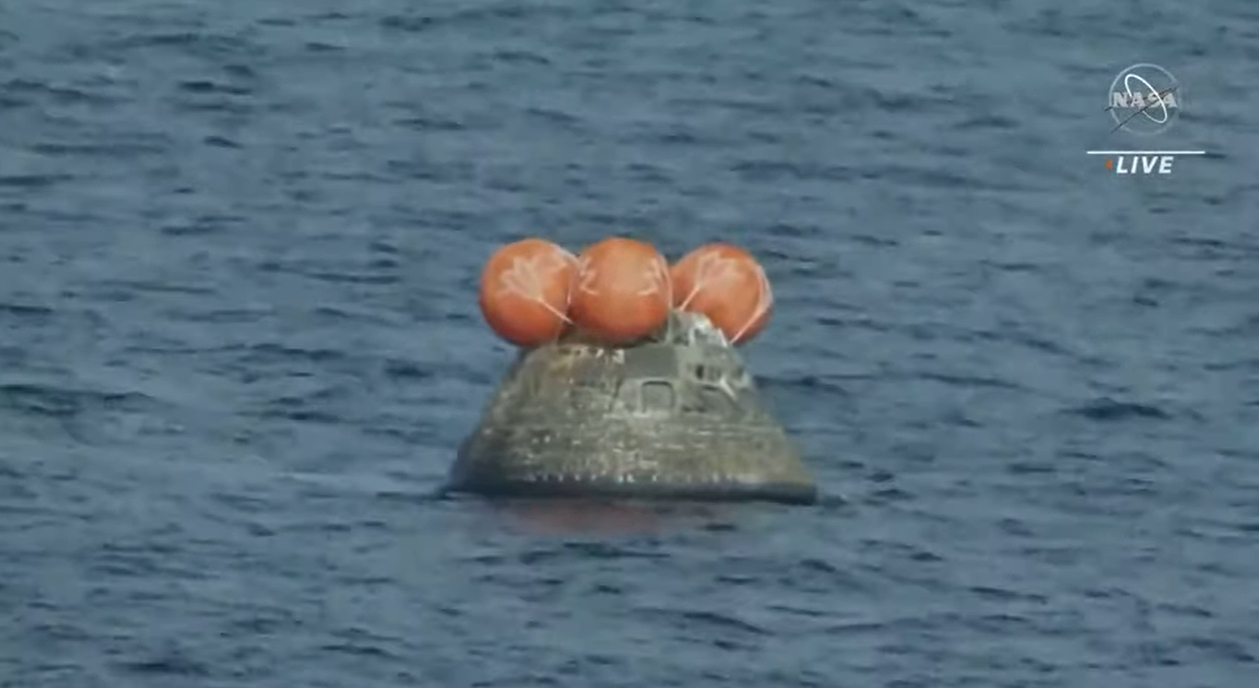NASA is over the moon with success of Artemis 1 Orion test flight

NASA couldn't be happier with how its Artemis 1 moon mission went.
Artemis 1 wrapped up Sunday afternoon (Dec. 11) with the successful splashdown of an uncrewed Orion capsule in the Pacific Ocean about 100 miles (160 kilometers) off the coast of Baja California.
Though a considerable amount of postflight analysis remains, NASA already views the 25.5-day-long Artemis 1 as a rousing success.
"I don't think any one of us could have imagined a mission this successful," Artemis 1 mission manager Mike Sarafin said during a post-splashdown briefing on Sunday. "We now have a foundational deep-space transportation system."
In photos: 10 greatest images from NASA's Artemis 1 mission
That system consists of Orion and the Space Launch System (SLS) megarocket, which sent the capsule on its way to the moon on Nov. 16 from NASA's Kennedy Space Center (KSC) in Florida.
It was the debut liftoff for the SLS, and the huge vehicle performed nearly flawlessly, agency officials have said. Orion picked up the baton nicely, meeting all of its required milestones as well.
Breaking space news, the latest updates on rocket launches, skywatching events and more!
The capsule arrived in orbit around the moon on Nov. 25 and left on schedule six days later. On Dec. 5, Orion aced a long engine burn during a close lunar flyby, setting it on course for Earth.
The homecoming also went according to plan. Orion's 16.5-foot-wide (5 meters) heat shield — the largest of its type ever flown — protected the capsule during its fiery reentry to Earth's atmosphere on Sunday. And its drogue and main parachute systems deployed on time, slowing Orion's descent and enabling a soft splashdown.
Orion will soon be loaded onto the USS Portland, a U.S. Navy recovery ship, which will haul the capsule to San Diego. From there, the spacecraft will be shipped overland to KSC, where it will get a thorough inspection.
NASA won't issue an official verdict on the test flight until that work, and analyses of Orion's voluminous flight data, are concluded. But given how smoothly everything went on Artemis 1, the final assessment is likely to be glowing.
"I think this vehicle and the performance really exceeded expectations," KSC Director Janet Petro said of Orion during today's briefing.

The postflight work will further inform NASA's plans for Artemis 2, which is scheduled to launch astronauts on a 10-day mission around the moon in 2024.
The next flight after that, Artemis 3, will put boots down near the lunar south pole in 2025 or 2026. Future missions in NASA's Artemis program will help build a research base in that region, which is thought to be rich in water ice.
The agency wants that outpost to be up and running by the end of the 2020s, and Artemis 1's success keeps that ambitious target within reach.
"We have hardware in work today through Artemis 5," Jim Free, associate administrator for NASA's Exploration Systems Development Mission Directorate, said during Sunday's press conference.
"This isn't just a 'one flight and we're done,'" Free added. "We are on our path to getting that base on the moon, to getting the understanding we need to go on to Mars and doing the science that's front and center here in our program."
Mike Wall is the author of "Out There" (Grand Central Publishing, 2018; illustrated by Karl Tate), a book about the search for alien life. Follow him on Twitter @michaeldwall. Follow us on Twitter @Spacedotcom or Facebook.

Michael Wall is a Senior Space Writer with Space.com and joined the team in 2010. He primarily covers exoplanets, spaceflight and military space, but has been known to dabble in the space art beat. His book about the search for alien life, "Out There," was published on Nov. 13, 2018. Before becoming a science writer, Michael worked as a herpetologist and wildlife biologist. He has a Ph.D. in evolutionary biology from the University of Sydney, Australia, a bachelor's degree from the University of Arizona, and a graduate certificate in science writing from the University of California, Santa Cruz. To find out what his latest project is, you can follow Michael on Twitter.
